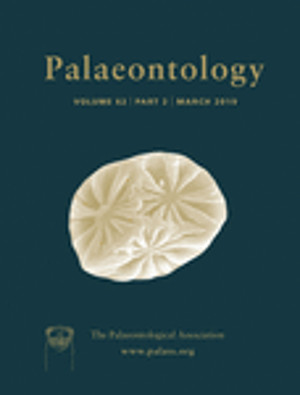Reg. Charity No. 1168330

Hyoliths were among the earliest biomineralizing metazoans in Palaeozoic marine environments. They have been known for two centuries and widely assigned to lophotrochozoans. However, their origin and relationships with modern lophotrochozoan clades have been a longstanding palaeontological controversy. Here, we provide broad microstructural data from hyolith conchs and opercula from the lower Cambrian Xinji Formation of North China, including two hyolithid genera and four orthothecid genera as well as unidentified opercula. Results show that most hyolith conchs contain a distinct aragonitic lamellar layer that is composed of foliated aragonite, except in the orthothecid New taxon 1 that has a crossed foliated lamellar microstructure. Opercula are mostly composed of foliated aragonite and occasionally foliated calcite. These blade or lath‐like microstructural fabrics coincide well with biomineralization of Cambrian molluscs rather than lophophorates, as exemplified by the Cambrian members of the tommotiid‐brachiopod linage. Accordingly, we propose that hyoliths and molluscs might have inherited their biomineralized skeletons from a non‐mineralized or weakly mineralized common ancestor rather than as a result of convergence. Consequently, from the view of biomineralization, the homologous shell microstructures in Cambrian hyoliths and molluscs strongly strengthen the phylogenetic links between the two groups.